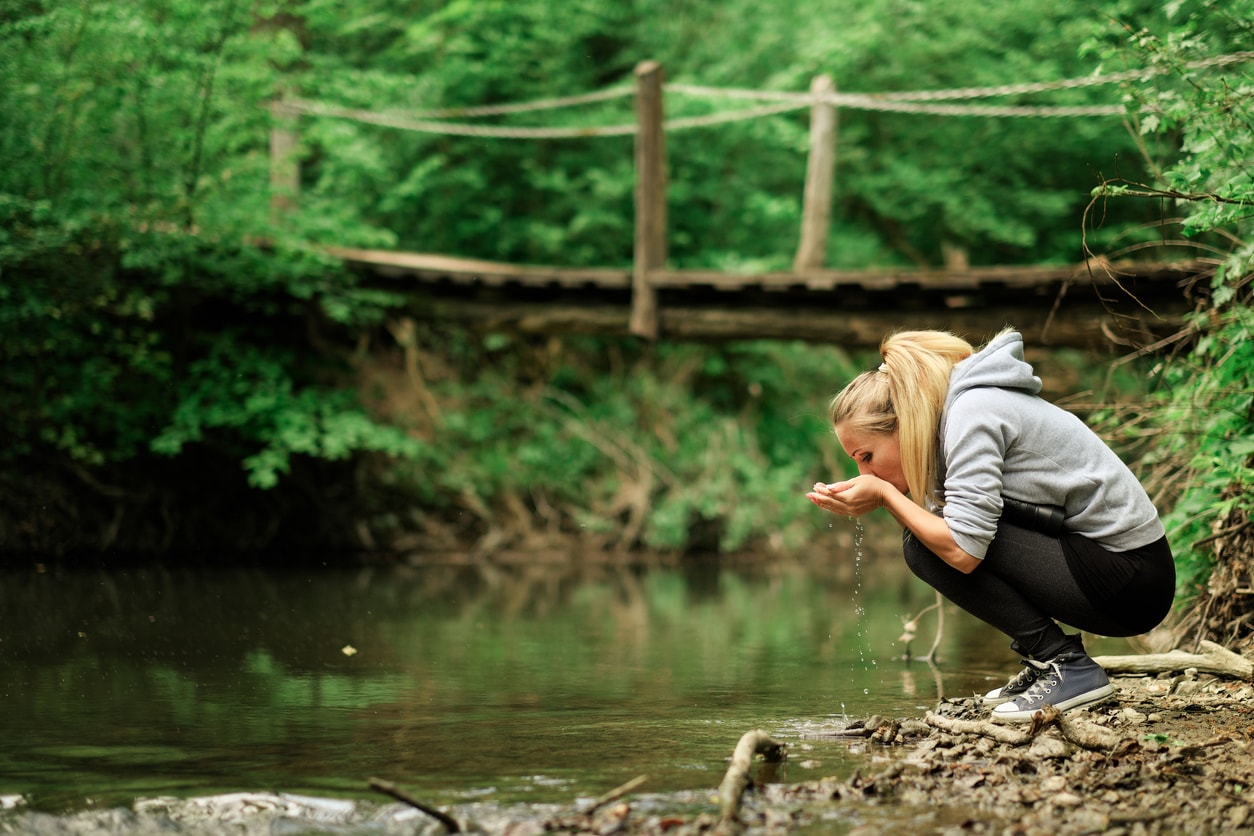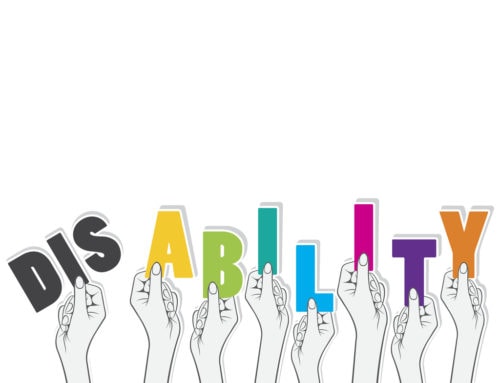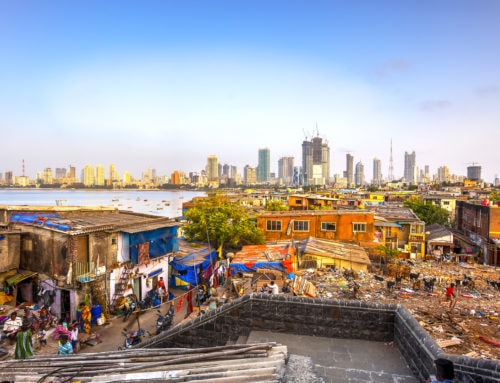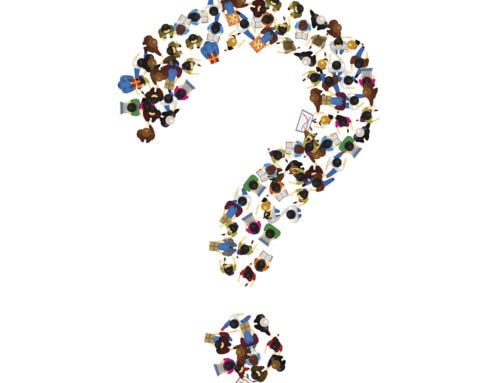raw water: “natural water” – water that is unfiltered, untreated, and unsterilized; companies market and sell it to consumers in branded bottles or through home collection systems for homeowners.
*** TROVELOG ***
The sale of “raw water” – water gathered from streams, rivers, lakes and other natural sources that is not subject to any filtering or sterilization – is a trend that has alarmed public health experts.
The water that runs out of the tap in our kitchens is the accepted source of drinking water for most Americans and residents of other advanced economies with modern public infrastructures. In the interest of public health and safety, that water has been subjected to some kind of chemical treatment and additives (e.g., chlorine, fluoride) by the governmental agencies or private companies that provide the water to homes, businesses and public spaces.
Most Americans take drinking water safety for granted. Disturbing stories of unsafe public drinking water – like the lead contamination of the Flint, Michigan municipal water after a 2014 switch to using the Flint River as the water source – have been the exception in the U.S.
In recent decades, there has been an increase in U.S. sales of bottled sparkling or still water, as Americans have shown a preference for what was common (and often necessary) in other countries. Although the environmental impact of the bottles and the possibility that the plastic in the bottles may leach chemicals into the bottled water has caused some pushback on the acceptance of bottled water, it is generally accepted as safe drinking water. Bottled water is either drawn from natural sources (glaciers, springs, artesian wells, mineral springs) and then subjected to a filtration process to improve taste, smell and color; or it is drawn from local public water supplies and purified (by either distillation, deionization or reverse osmosis). The attraction of consumers for bottled water is rooted in personal convenience, healthy lifestyles and, for some, considerations of overt displays of consuming top brands.
Given the abundance of safe drinking water, experts are very alarmed at the recent trend for consuming “raw water” in the United States. Companies are bottling and selling water from sources that are no different from the water sources that people in other countries must rely on because there is not any, or at least not an adequate, supply of safe drinking water. As a consequence, reliance on such water supplies in those countries leads to severe health consequences, including serious disease and even death.
Sales of “raw water” fly in the face of common sense and the established science. Those who collect, market, sell, and consume raw water emphasize that it is “natural” with minerals that public water systems may be removing. However, “raw water” is also likely to include bacteria or perhaps chemicals that are unsafe for human consumption.
◄TrovelogTrovelogTrovelogTrovelogTrovelogTrovelogTrovelog►
Every few months, there’s a new trend that promises life-changing health benefits — a spice, or a juice, or another mundane consumable, often with an Indian or East Asian name thrown in to make it seem ancient and exotic. We see these things, laugh, and move on with our lives. We live and let live.
“Raw water” is the newest such trend. Customers are paying for the privilege of drinking water that is unfiltered, untreated, and unsterilized — and apparently they want it so badly that it is often out of stock. Numerous brands have emerged to cater to this fast-growing niche. A fool and his money are soon parted, and in free countries we should accept that. But this particular fad makes me recoil with disgust.
You see, “raw water” is the norm in much of the world — and it is no laughing matter. It results in stunted growth in children, crippling disease, birth defects, and an endless list of other tragic outcomes. A recent World Bank study, conducted across 18 countries, revealed that only 20 percent of these nations’ rural inhabitants had access to clean water. In some countries, access to clean water has gotten worse over the years. In Haiti, for example, half as many households have access to clean water as did 25 years ago. Perhaps our best and brightest envy this situation, seeing in it increased access to their beloved “raw water,” but I think we can safely assume that the people of Haiti would prefer water that doesn’t put them into a vicious cycle of getting sick, losing bodily fluids, needing more water, getting sicker, and so on.
. . .
To put this absurdity in perspective, consider that in the world’s “Middle Income Countries,” per capita income ranges from just under $3 to $34 a day, and that “raw water” bottles in the US cost $36.99 each. Or, put another way, in order to ingest “raw water,” the cause of 20 percent of child deaths worldwide, rich Americans have taken to spending more than most people in the world earn in a week. In doing so, not only are they rejecting millennia of widely understood science, but they are putting their lives and the lives of those around them at risk, in order to indulge in a patronizing play-act of poverty that puts even so-called slum tourism to shame.See opinion at: Jibran Khan, “‘Raw Water’ Makes a Mockery of Human Suffering, National Review, January 8, 2018
◄TrovelogTrovelogTrovelogTrovelogTrovelogTrovelogTrovelog►
Hold your canteen under a natural spring and you’ll come away with crystal clear water, potentially brimming with beneficial bacteria as well as minerals from the earth.
That’s what proponents of the “raw water” movement are banking on: selling people on the idea of drinking water that contains the things they say nature intended without the chemicals, such as chlorine, often used in urban water treatment processes.
In some areas of the country, including the West Coast, it has become a high-dollar commodity – water captured in glass bottles and sold straight to you.
“Naturally probiotic. Perfected by nature,” boasts Live Water, which sells raw water sourced from Oregon’s Opal Spring.
But by shunning recommended water safety practices, experts warn, raw water purveyors may also be selling things you don’t want to drink — dangerous bacteria, viruses and parasites that can make you sick.
. . .
Experts say raw water may contain minerals, but you can get the minerals you need from a healthy diet — and the risk of harmful bacteria, viruses and parasites is not worth any benefit from trace minerals.
. . .[E]xperts say, it is imperative to know what exactly you are putting into your body.The cleanliness of the water, they say, depends on things you can’t see — whether herds of elk or moose or caribou have relieved themselves in a stream that you’re drinking from and left it full of parasites. Or whether there has been groundwater contamination from naturally occurring elements such as arsenic, radon or uranium, or from pesticides and other chemicals.
See article at: Lindsey Bever, ” ‘Raw water’ is the latest health craze. Here’s why drinking it may be a bad idea,” The Washington Post, January 4, 2018
◄TrovelogTrovelogTrovelogTrovelogTrovelogTrovelogTrovelog►
At Rainbow Grocery, a cooperative in this city’s Mission District, one brand of water is so popular that it’s often out of stock. But one recent evening, there was a glittering rack of it: glass orbs containing 2.5 gallons of what is billed as “raw water” — unfiltered, untreated, unsterilized spring water, $36.99 each and $14.99 per refill, bottled and marketed by a small company called Live Water.
“It has a vaguely mild sweetness, a nice smooth mouth feel, nothing that overwhelms the flavor profile,” said Kevin Freeman, a shift manager at the store. “Bottled water’s controversial. We’ve curtailed our water selection. But this is totally outside that whole realm.”
Here on the West Coast and in other pockets around the country, many people are looking to get off the water grid.
Start-ups like Live Water in Oregon and Tourmaline Spring in Maine have emerged in the last few years to deliver untreated water on demand. An Arizona company, Zero Mass Water, which installs systems allowing people to collect water directly from the atmosphere around their homes, began taking orders in November from across the United States. It has raised $24 million in venture capital.
. . .
What adherents share is a wariness of tap water, particularly the fluoride added to it and the lead pipes that some of it passes through. They contend that the wrong kind of filtration removes beneficial minerals. Even traditional bottled spring water is treated with ultraviolet light or ozone gas and passed through filters to remove algae. That, they say, kills healthful bacteria — “probiotics” in raw-water parlance.The quest for pure water is hardly new; people have been drinking from natural springs and collecting rainwater from time immemorial. The crusade against adding fluoride to public water began in the 1950s among Americans who saw danger in the protective measures that had been adopted over decades to protect the populace from disease and contamination.
But the off-grid water movement has become more than the fringe phenomenon it once was, with sophisticated marketing, cultural cachet, millions of dollars in funding and influential supporters from Silicon Valley.
. . .
Talk like Mr. Singh’s disturbs Dr. Donald Hensrud, the director of the Healthy Living Program at the Mayo Clinic in Rochester, Minn. What the raw-water partisans see as dangers, he says, are important safety measures.“Without water treatment, there’s acute and then chronic risks,” Dr. Hensrud said, including E. coli bacteria, viruses, parasites and carcinogenic compounds that can be present in untreated water. “There’s evidence all over the world of this, and the reason we don’t have those conditions is because of our very efficient water treatment.”
See article at: Nellie Bowles, “Unfiltered Fervor: The Rush to Get Off the Water Grid,” The New York Times, December 29, 2017
◄TrovelogTrovelogTrovelogTrovelogTrovelogTrovelogTrovelog►
See video at: “A Deep Dive into the ‘Raw Water’ Craze,” The Daily Show with Trevor Noah (Comedy Central), April 18, 2018
◄TrovelogTrovelogTrovelogTrovelogTrovelogTrovelogTrovelog►
See related Trovelog posts: biohackers <>






